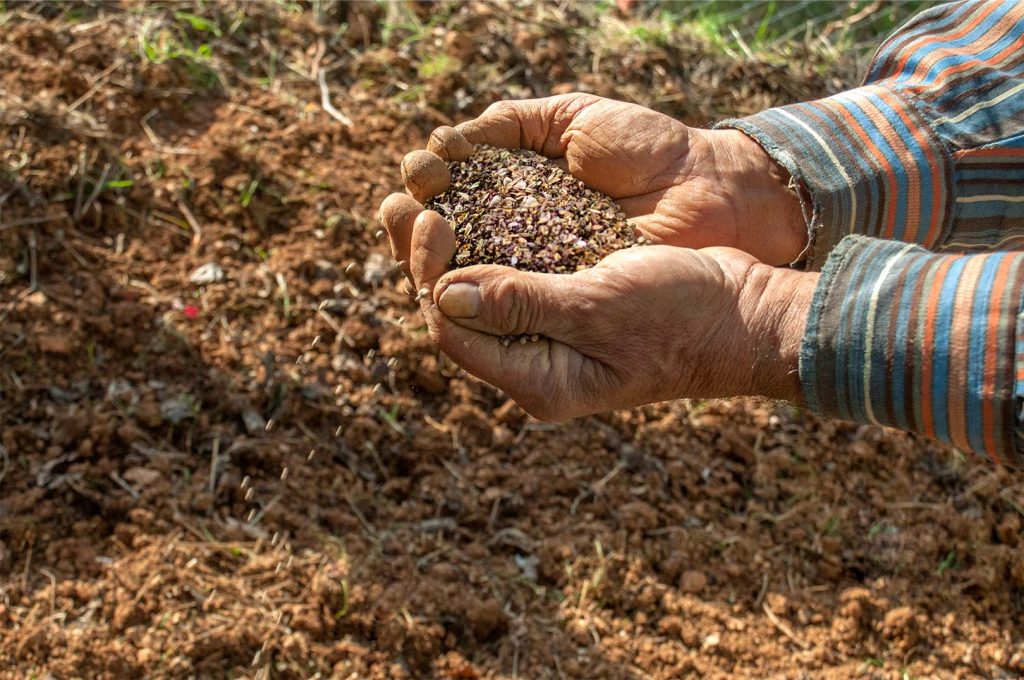
Seedbed Preparation: Guiding Principles
Table of Contents
When the soil is prepared and ready for planting seeds, it is termed a seedbed. A proper seedbed can be the difference between a successful planting and a failed planting. It can take on many looks, but the guiding principles are that the seedbed should: 1) allow the seeds to make contact with the soil, 2) have no more than 50% of the soil covered by thatch when the seeding is completed, 3) have no living plants on the field and 4) have firm soil. Below, each of these concepts is explored in more detail.
Seed-to-Soil Contact
Seed-to-soil contact, the first principle, allows the seed to take in water, germinate, and grow. For most native seeds, the goal is to have the seeds embedded in the soil. The seed can be buried, but no more than ¼ to 1/8th inch, and burying the seeds is not at all necessary (Eastern Gamagrass is the exception to this as it does prefer to be planted at deeper depths). The goal is simply to achieve seed-to-soil contact.
Not too Much Mulch/Soil Cover
The second principle is that no more than 50% of the soil should be covered by thatch when the seeding is complete. Thatch, or dead plant material, that is too thick is like mulch in a garden that either prevents contact with the soil and thus germination of seeds, or it smothers them before they can reach the light of the sun. So, aim for a final coverage of thatch that is 50% or less. It could be said that principles 1 and 2 are one and the same because, if indeed the thatch has 50% or less coverage of the soil, the seed will be able to make contact with the soil when it is either broadcast or drilled.
Kill Living Plants
Eradicating all living plants is the third principle. Any plant that is growing on the site at the same time that the native seedlings are germinating, growing , and developing serves as competition for the desired native plants. So, before planting, make one last effort, if needed to kill living plants and lessen the competition. Exceptions to this principle include split planting methods where part of the stand has been planted earlier and this is the second seeding. Also, sometimes there is a plan to spray after planting, and in this case, there may be living plants at the time of seeding but a plan to kill them before germination of the natives. Sometimes there is a plan for a nurse crop to die as the native seedlings are beginning to germinate and grow, and as long as the plant spacing is fairly thin, these living plants may not cause a problem. Lastly, a really obvious living plant that is acceptable is desirable trees (however note that planting under a full canopy of trees is usually not a good plan either, to learn more about savanna/woodland creation, read 9 Tips for Creating a Native Silvopasture).
Firm Seedbed
Fourth, consider that a seedbed should generally be firm before planting. Following disking, dozing, or even an aggressive dragging, the soil can become quite fluffy. In a fluffy seedbed, some actions such as drilling, using a roller after broadcasting seed, or dragging after broadcasting seeding can bury the seed too deep. Seeding into a fluffy seedbed is not always a problem, such as when broadcasting seed and not following that up with other mechanical action, but careful thought should be given to the situation before doing this because again, the seed should not be buried more than 1/8th to ¼ inch deep in the soil.
Learn More…
To learn more about creating a good seedbed and to consider various tools to use in the preparation of a seedbed, read the Seedbed Preparation Overview, or watch a video, Preparing Your Seedbed: Seed-to-Soil Contact, to see some methods of getting seed-to-soil contact and examples of good and bad seedbeds. Then look into information on planting in the Seeding Options Overview.